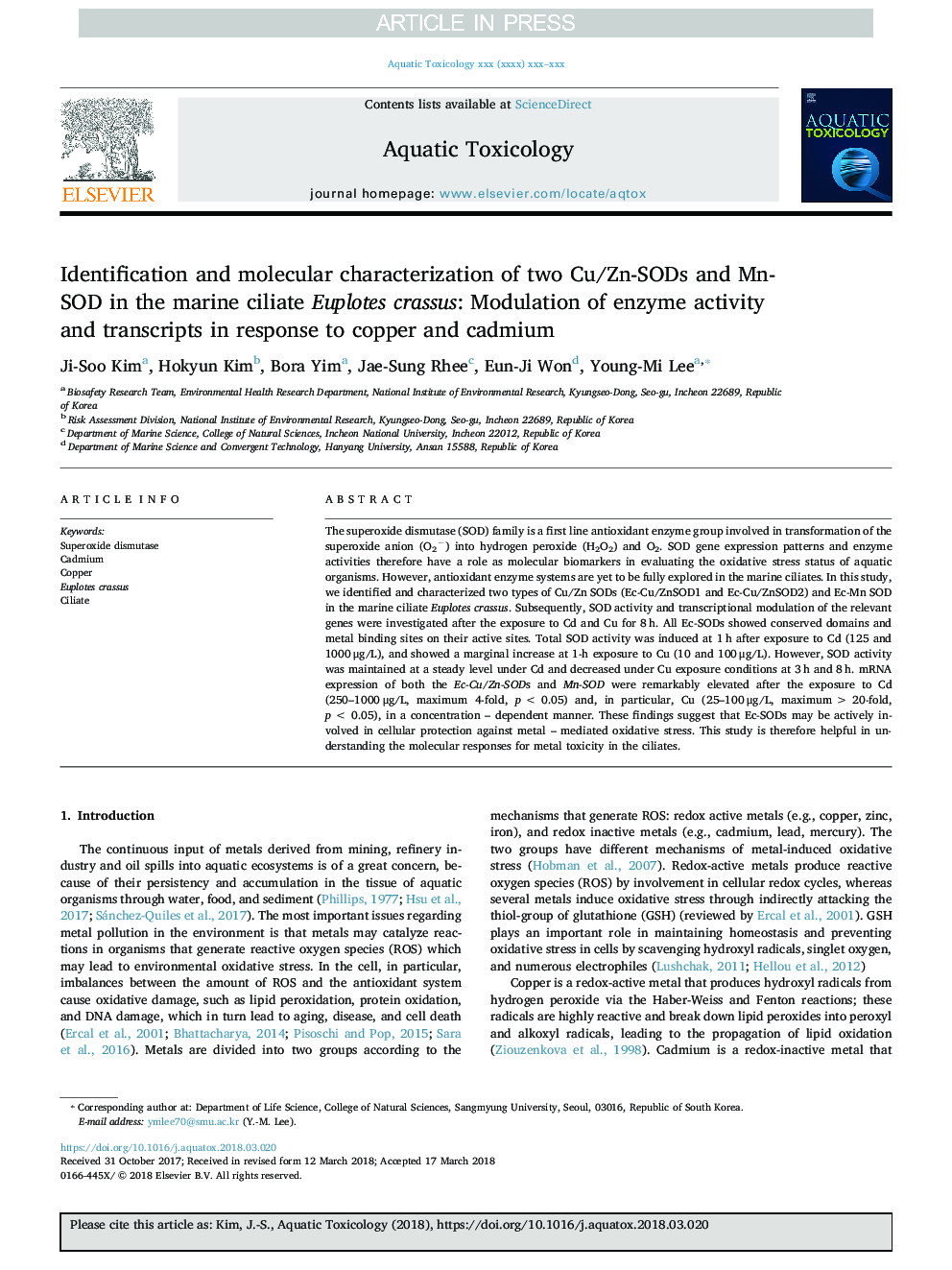| Article ID | Journal | Published Year | Pages | File Type |
|---|---|---|---|---|
| 8883764 | Aquatic Toxicology | 2018 | 9 Pages |
Abstract
The superoxide dismutase (SOD) family is a first line antioxidant enzyme group involved in transformation of the superoxide anion (O2â) into hydrogen peroxide (H2O2) and O2. SOD gene expression patterns and enzyme activities therefore have a role as molecular biomarkers in evaluating the oxidative stress status of aquatic organisms. However, antioxidant enzyme systems are yet to be fully explored in the marine ciliates. In this study, we identified and characterized two types of Cu/Zn SODs (Ec-Cu/ZnSOD1 and Ec-Cu/ZnSOD2) and Ec-Mn SOD in the marine ciliate Euplotes crassus. Subsequently, SOD activity and transcriptional modulation of the relevant genes were investigated after the exposure to Cd and Cu for 8â¯h. All Ec-SODs showed conserved domains and metal binding sites on their active sites. Total SOD activity was induced at 1â¯h after exposure to Cd (125 and 1000â¯Î¼g/L), and showed a marginal increase at 1-h exposure to Cu (10 and 100â¯Î¼g/L). However, SOD activity was maintained at a steady level under Cd and decreased under Cu exposure conditions at 3â¯h and 8â¯h. mRNA expression of both the Ec-Cu/Zn-SODs and Mn-SOD were remarkably elevated after the exposure to Cd (250-1000â¯Î¼g/L, maximum 4-fold, pâ¯<â¯0.05) and, in particular, Cu (25-100â¯Î¼g/L, maximumâ¯>â¯20-fold, pâ¯<â¯0.05), in a concentration - dependent manner. These findings suggest that Ec-SODs may be actively involved in cellular protection against metal - mediated oxidative stress. This study is therefore helpful in understanding the molecular responses for metal toxicity in the ciliates.
Related Topics
Life Sciences
Agricultural and Biological Sciences
Aquatic Science
Authors
Ji-Soo Kim, Hokyun Kim, Bora Yim, Jae-Sung Rhee, Eun-Ji Won, Young-Mi Lee,
